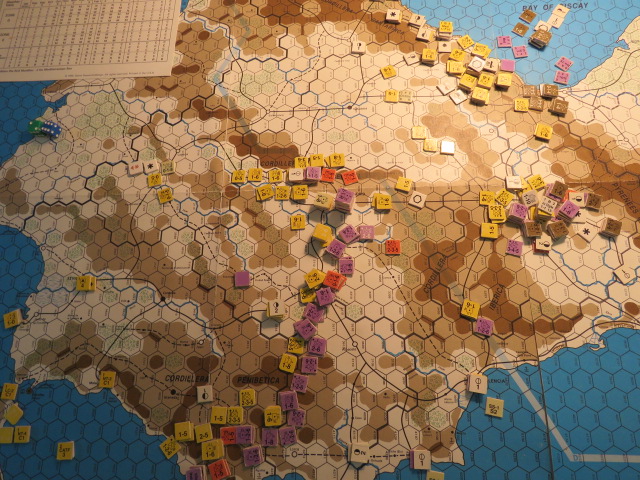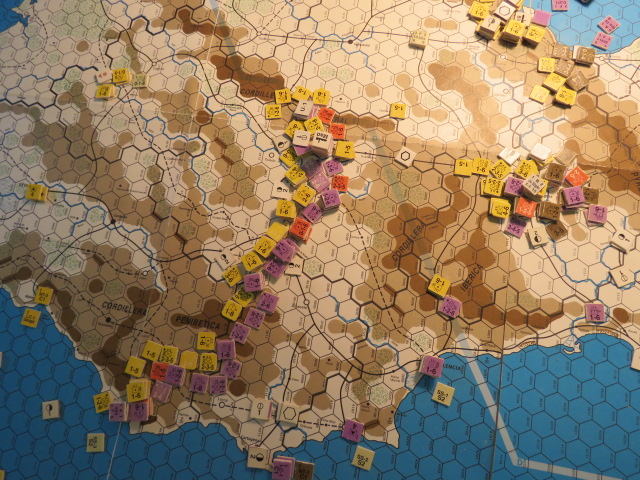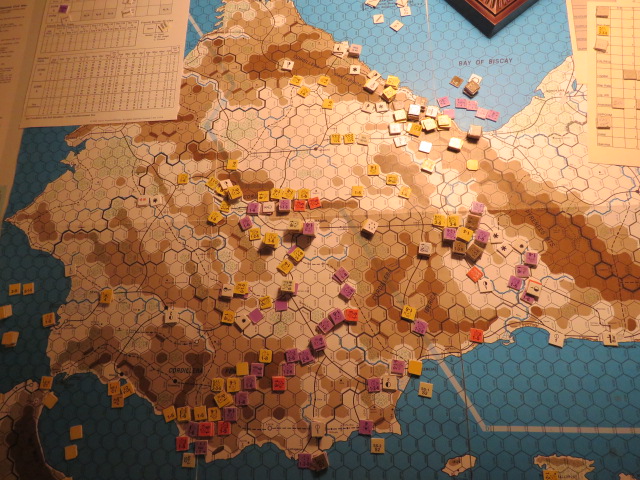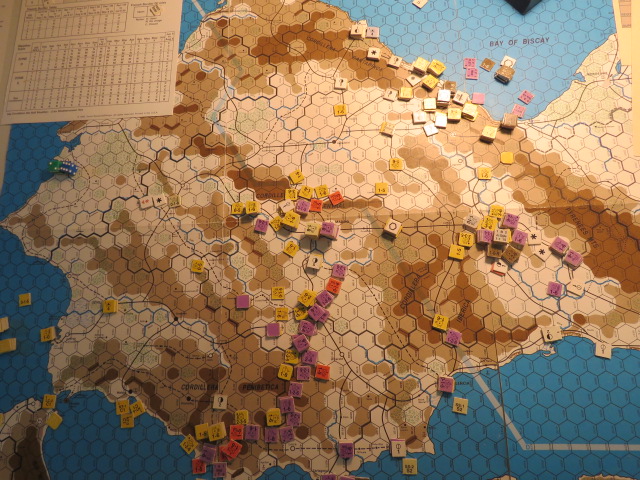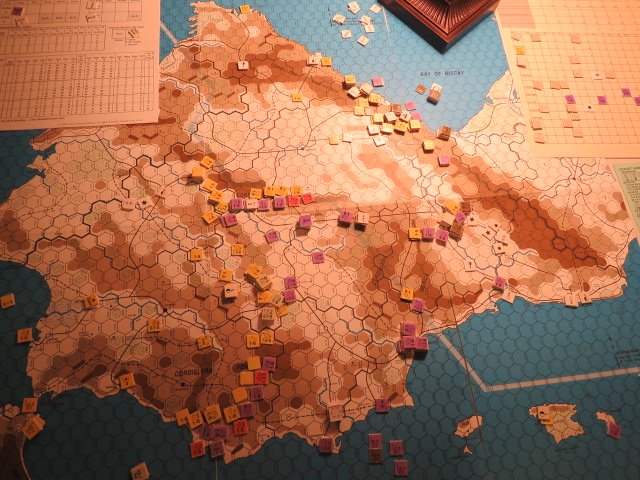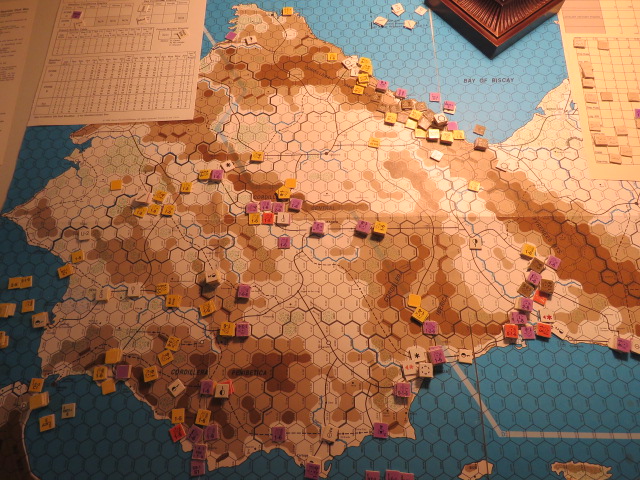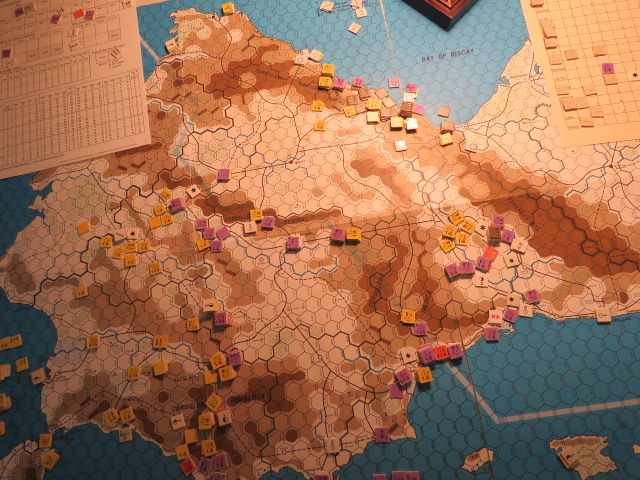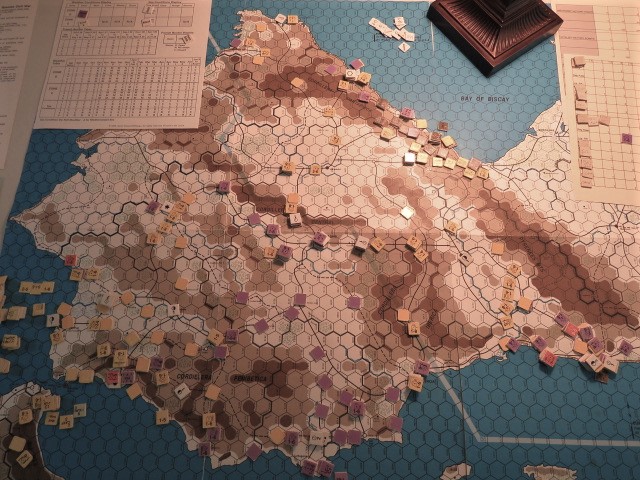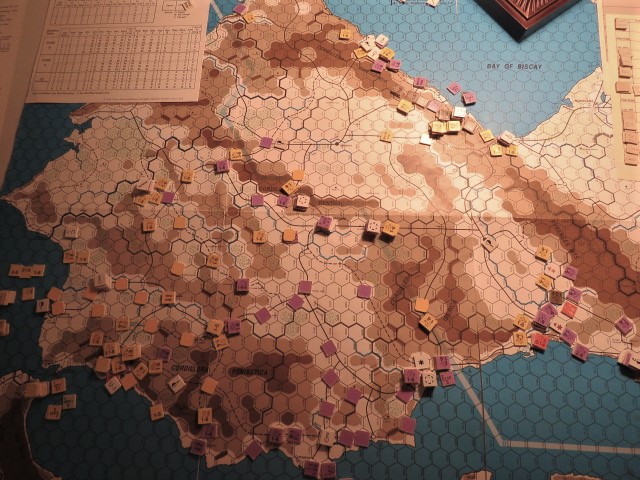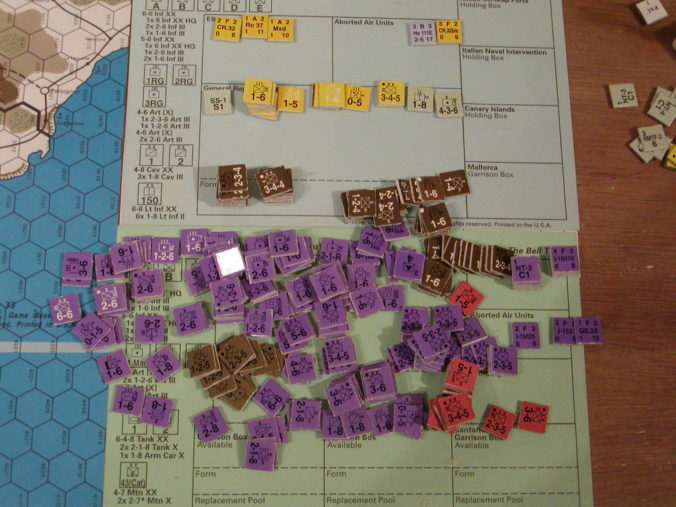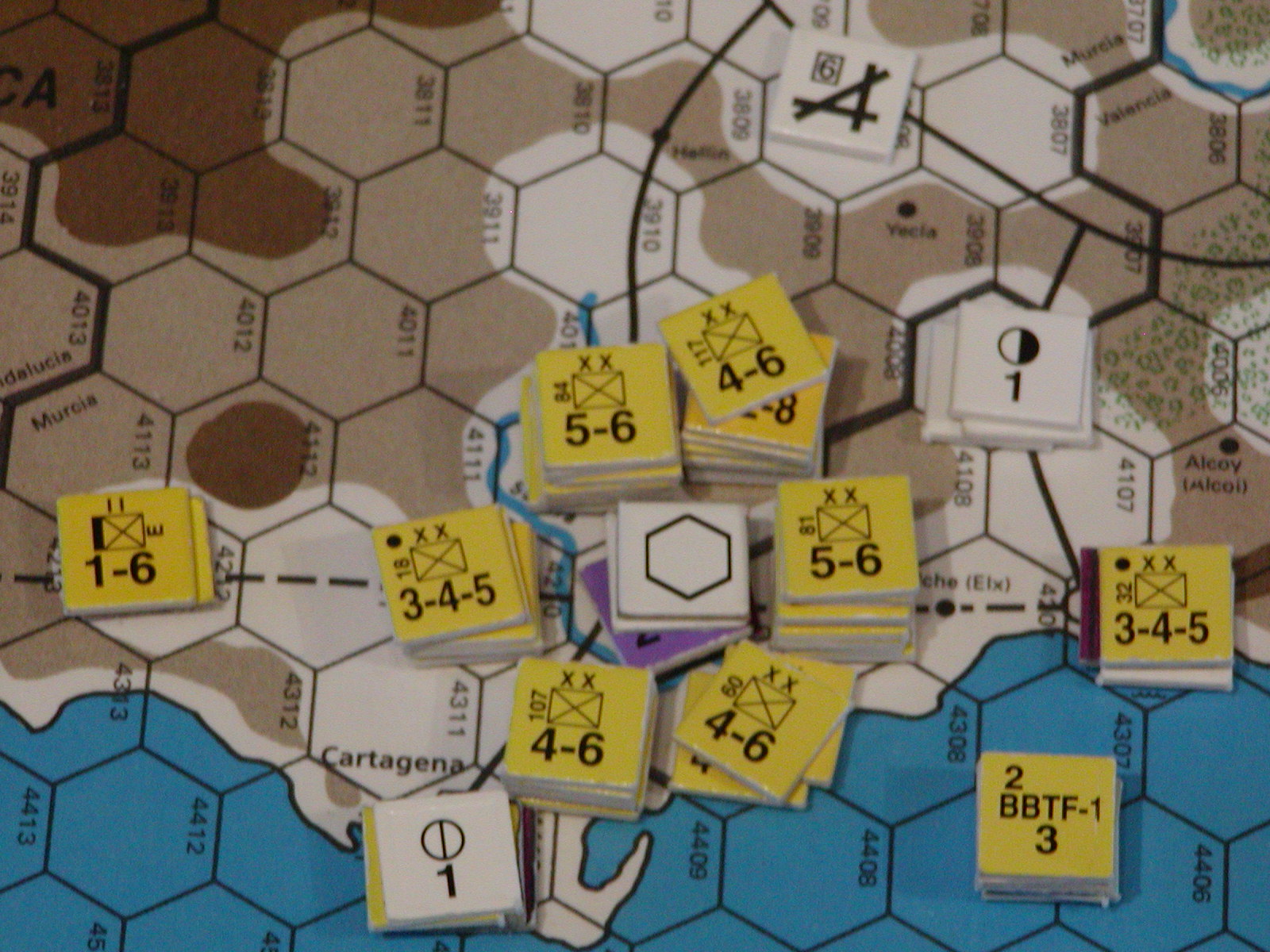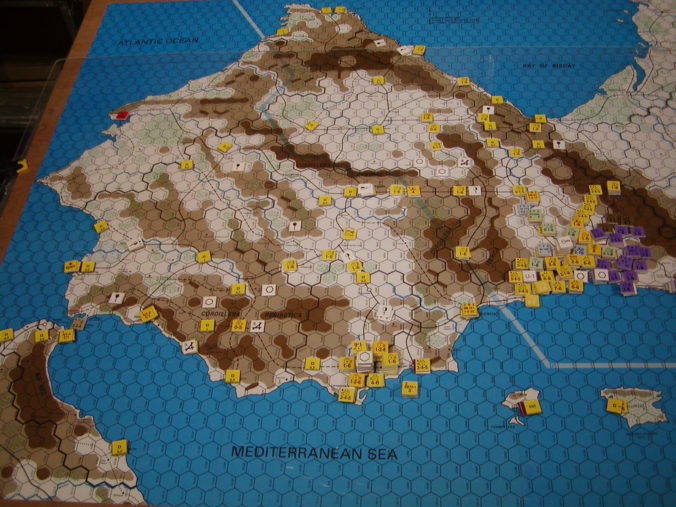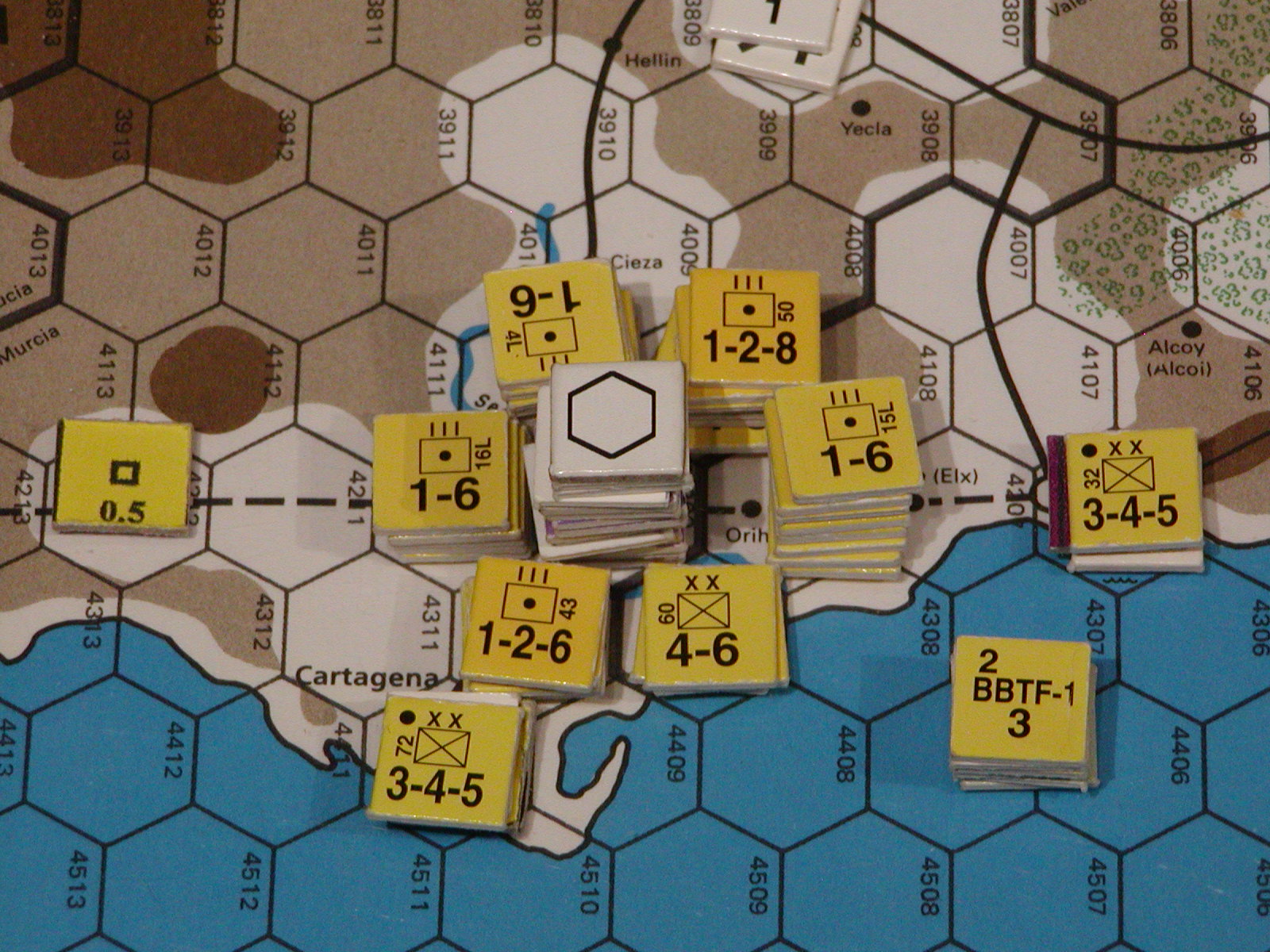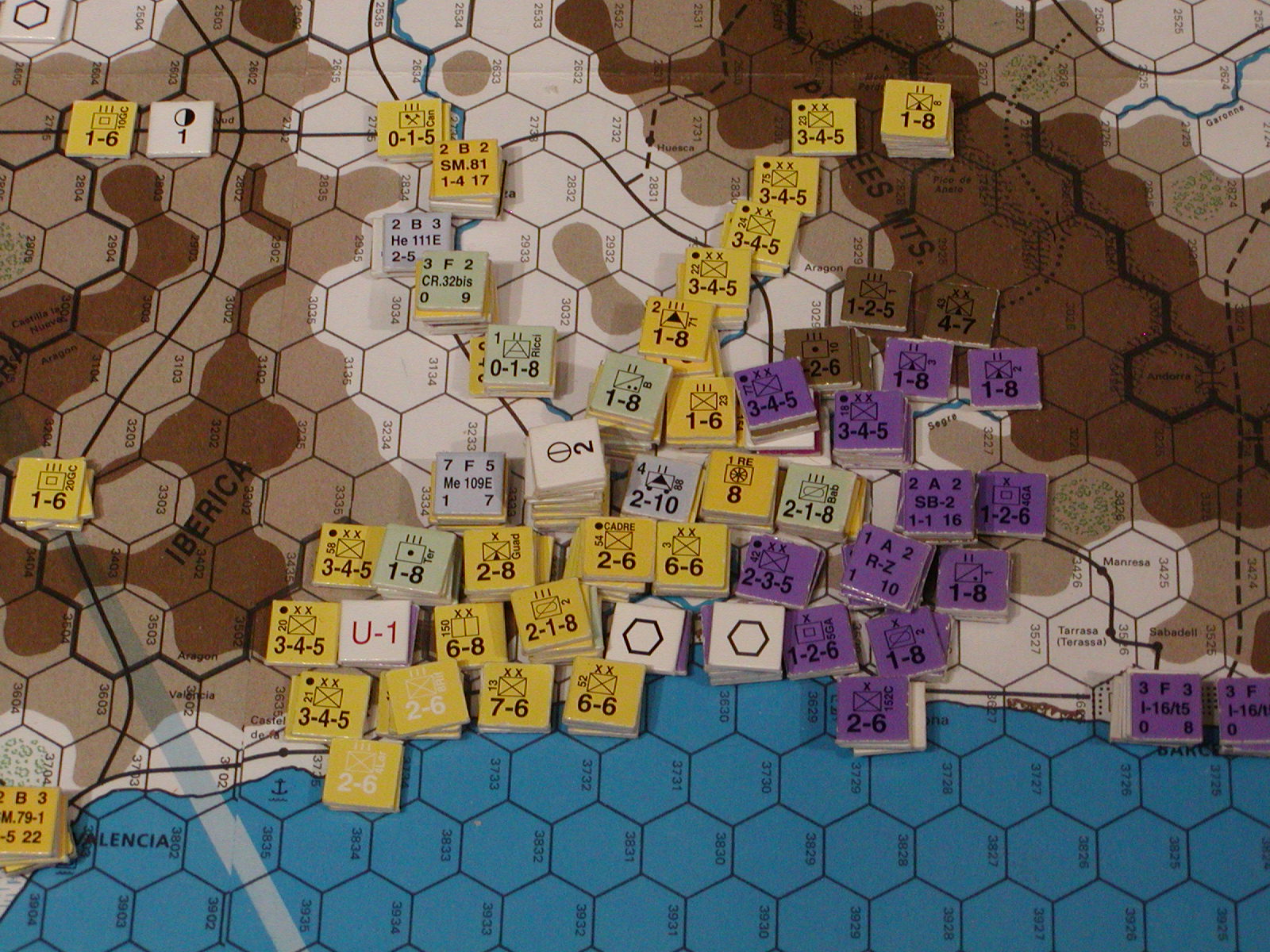Editors Note:
This article was originally published in El Miliciano, nr. 5 (1996). It has been translated from Spanish by Wolf Broszies (with a little bit of google help)
The Fate of the Republic is decided in the North
Several games demonstrated the crucial importance of the North Front for any war game concerned with the Spanish Civil War. In For WHom the Bell Tolls, the rules governing the political impact of the northern regions that remained loyal to the Republic vastly overstate their importance to the Loyalist cause. One point is the real potential of the Santander Army Corps as compared to the OOB in FQtBT.
For example, at the beginning of the Battle of Vizcaya on March 31st, 1937, the Basque Army was not yet even organized in Brigades, but employed about 40 maneuver batallions organized into several sectors of varied size, composition and capabilities. It took until the end of April for the need of higher echolons to finally be recognized. A total of 18 brigades were created and grouped into four dividions over the next months, with a fifth added on May 17th.
In total there were about 70 Basque battalions, although of very diverse structure and history. In FWBT however, the scenario of Mediated War starting April I 37 the Basque Army Corps deploys up to 6 divisions and 8 other brigades, as well as a regiment of light tanks, two of artillery, two of engineers and two of construction. This is opbviously a more powerful force than the historical one.
Jul I 36
For this reason the player on the Nationalist side decided to concentrate on the North Front, even at the cost of sacrificing greater achievements in other sectors. The turn of July II 36 began by placing the two brigades of requetés that enter reinforcement in Pamplona and Vitoria to support the attack on San Sebastián. Because of the Rise and Revolution rule [37.C], the first two first turns are special. All the units are supplied and do not have to check their isolation situation, but also on the turn of July II 36 the metropolitan units can only move one hex and can not attack, can not use rail movement, air units can not perform intercept, patrol or CAP missions, amphibious landings can not be made (although they can be planned for later turns), both fleets can not provide naval support and the Republican Fleet can not go to sea. Only African Army units can move up to half their movement capacity and can attack.
In this first turn, the national player initiated the airlift by moving the battalions of African Hunters 4th and 5th as well as the 3rd regiment of Regulares to Cádiz. In this city also landed the 2nd Tercio de la Legión and the Oriental artillery group. Units that attacked together Jerez de la Frontera to occupy this way, the aerodrome of this town. While, in Asturias, the two units of Oviedo occupy Avilés with its important port and the hexagon 1107 with what cuts the withdrawal to the units of Gijón. The republican subturno is fast. In the center, different columns depart from Madrid towards Toledo, Talavera and Somosierra. In Catalonia, the ideological purification of its cities prevents the large number of units present from marching on Aragon.
July II
On the turn of July II 36, restrictions remain for metropolitan units. While those of the African Army can move and attack freely, the remaining ones can only move half of their movement capacity, although they can attack. This turn begins with the placement of reinforcements. Between them arrive two important units of Italian submarines that are immediately placed in front of Cartagena in order to block the Republican fleet of cruisers anchored there.
The national player decides to put into practice his plan to occupy Gijón and thus leave, outside the war, all of Asturias and its bellicose militiamen. For this purpose, your Fleet escorts the transports that are going to land in Avilés the 2nd Tercio de la Legión and the Oriental artillery group. This fleet travels its last ten hexagons at night to hinder the interception by the republican fleet located in Santander. This one, in its attempt fails, reason why the two regiments disembark in Avilés without more setbacks. Once there, next to the two units of Oviedo, arrivals by rail and Leon, prepare to attack Gijón. The Asturian brigades pass the militia check so the attack reaches a 3: 1 without modifiers. A four in the dice means the withdrawal of the Asturians, their elimination to withdraw by Zone of enemy Control and the fall of Gijón. The importance of this fact is reflected in the fact that if it is not reconquered in the immediate death of the Republican Asturias, it will collapse and its troops will be definitively eliminated from the game. The strength of the national units that defend the two cities of the Principality, Oviedo and Gijón, makes their reconquest unlikely. This maneuver, the disembarkation of two of the best units of the Army of Africa in Avilés, baptized already as the ” Gambito Asturiano “, has a key importance. Even supposing that the republican player does everything possible to avoid it from the beginning of the game, the fall of Asturias is very likely. Let’s see why.
Aug I 36
In the turn of August I 36, only the republican fleet that starts the game in Santander has the possibility of intercepting the national fleet. The probabilities of doing so are 2/6, and in the event that it is achieved, a combat would start with an enemy force of the same potential as his (3) and, consequently, an uncertain outcome that will depend on chance. Assuming that the transported force disembarks without setbacks in the Asturian port, it will be found that the maximum republican forces capable of defending Gijón are three brigades, one regiment and the intrinsic defense of this city, with a total of 7 combat points without support, what in fact are 3’5 points. The national player, after placing the 32nd Rto in the previous turn. in hexagon 1107 you can bring 3 points by rail in addition to the unit that starts in Leon. In total, he will attack Gijón with 11 combat points, which gives him a 3: 1 ratio. With this table, Gijón is only saved if a combat comes out 1. Of course, if the republican units fail the militia check (what happens by taking a 1 on the die) its value will be 1.75 points, so the proportion will increase to 6: 1 and the fall of Gijón will be inevitable.
The republican player can move his aviation to Asturias at the cost of unprotecting other sectors. In total and through DAS missions, it is a battle point to add to the defense of Gijón, which reduces the proportion to 2: 1 (5: 1 in case the militia check fails), since the support of the National aircraft is insufficient to counteract Republican aviation. A 2: 1 attack is risky for the national because if a 1 comes out, the result is AR and would have to retire unprotecting Oviedo. It should be borne in mind that, if rule 45.B is used, the incremental Combat Table, by which the fractions of the proportion are rounded to the nearest column by means of a percentile roll, it is possible to reach 3: 1 again. although it is still as risky to not be able to cancel the attack if this new roll fails.
In turn, the national player has the possibility of counteracting the Republican air support by transferring the combat TF to Avilés without escorting the transports and having it in that hex during the last three steps of the naval movement preparing the artillery support. In this way, just adding 2 support points (3 in the case that the national aircraft could not support) would again reach the 3: 1 ratio. The transports would arrive without escort taking advantage of the rule of Protected Waters (those own coastal hexagons in which it can not be intercepted by the movement of reaction of the enemy fleet). A problem arises in this respect, and that is that according to the rules, the hexagons to be their own must either be occupied by their own chips or submitted to their Control Zone. This implies that those on the coast between El Ferrol and Avilés could not be considered as the national player’s own hexagons at the time of the naval movement since no unit of their own could pass through that area. In addition, for subsequent turns, the unit that is awarded the only mission to travel this coast to turn it into its own hexagons will have to move through hexagons “rough” which will greatly slow down its progress. If this function is already somewhat absurd, it is even more so when we know that there existed (and exists) a coastal road not reflected in the map, whose importance is reflected by the fundamental use made of it by the Galician columns that marched to the command of Colonel Martín Alonso to free Oviedo. In this regard, I suggest that some flexibility be applied and that the condition of own hexes or enemies be made according to the situation of the fronts. Especially when taking the exhaustive control of all the hexes of the map in a game like this one of the Civil War forces to mark each and every one of them. The only exception is the railway lines, which must be marked as they take possession of them because of the great importance they have during the first shifts.
In the Republican subturno, if you still have the city, this player will place the Asturian reinforcements and the brigades that activate the garrison in Gijón, which will raise up to 11 combat points for those defending Gijón. In addition, through the half point of replacement of artillery produced by the Gijon factory in this turn, and another half point landed as reinforcement (the national naval interdiction will prevent taking 4, 5 or 6 in the corresponding roll, although the Republican may try it until four times), the republican player will have been able to replace an artillery regiment 1-6 with which their units will have support. Apart from those that defend Gijón, other units may move to other hexagons.
The situation will have precipitated in Asturias and with prospects of stagnation before the enormous number of defending units. Even, the national player can try the attack 2: 1, because, they are a 50% chance to take Gijón and destroy the defending units. The risk lies in the 16% chance of AR leaving and having to withdraw. Even in this case, Oviedo would be defended by a maximum of 4’5 points (5 with DAS), which seems sufficient to stop the Republican counterattack.
Returning to the game described, the national player isolated San Sebastian with its Navarrese columns, reached the heights of Somosierra and in the south, taking advantage of the fact that the republican units of Malaga have advanced to the important hexagon 3723 -communication center-, units from Cordoba, Granada and Seville attacked those units. When carrying out the militia check, the Bda. Anarchist “RIM” obtained a result “Rout” with which the entire stack had to retreat, victims panic militants. The naval transports returned to Africa while continuing the airlift.
During the republican subturno, this player continues in Catalonia the ideological purification. The isolated troops of the area of Malaga are concentrated in the city. There are three republican regiments along with three anarchist units, so it is very feasible a new rout at the time of the check of militias. The cities of Toledo and Teruel are occupied by militia columns after being abandoned by their defenders. In the north, Santander troops prepare to defend their region before the national troops that advance from Asturias. At the same time, the Basque troops entrenched themselves in Bilbao and San Sebastián.
August II 1936
In the turn August II 36, new reinforcements from Africa disembark in the port of Gijón and together with the units already present in Asturias attack the three Santander brigades that located in the 1205 hexagon defend the coast. A new failed militia check, causes its combat factors to be worth half. The attack is an 8: 1 and the result is an Eliminated Defender. The fall of Santander is only a matter of time. In the south, the advance on Malaga continues. For the attack on this city, the national player deploys the Italian Fleet, which he can use once a year. With its 18 naval support points, it reaches a 3: 1 ratio. In the air, the republican Nieuport 51 brings down the Breguet XIX in combat. And this time, all the units pass the militia check. Only a 1 in the dice will prevent Malaga from falling. Not so, a DR means that national troops enter Malaga while in their withdrawal, the six Republican units are eliminated by doing so through enemy Zones of Control.
This last action has ended by demoralizing the Republican player. With an army still dispersed, with all the troops of Catalonia occupied in the pacification of this region, with a North Front whose end is a matter of few turns and without real forces with which to counterattack in Andalusia, the republican player decides to capitulate. The fall of Asturias, and consequently that of the entire Republican North, greatly imbalances the game, and as has been shown, this is difficult to avoid.
